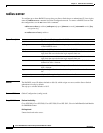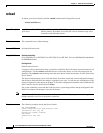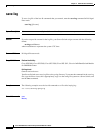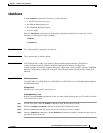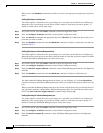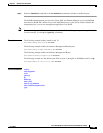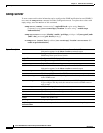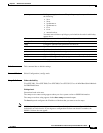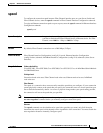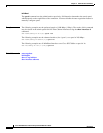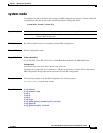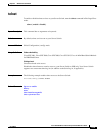
2-66
Cisco SFS 7000 Series Product Family Command Reference Guide
OL-9163-02
Chapter 2 Administrative Commands
snmp-server
snmp-server
To store contact and location information and to configure the SNMP notification host and SNMPv3
user, enter the
snmp-server
command in Global Configuration mode. To replace these values with
empty strings, enter the
no
form of this command.
snmp-server
{
contact
“
contact-string
”
|
engineID
local
engine-string |
host
dest
[community-string] [
recv-event-traps
] |
location
“
location-string
”
|
enable traps
authentication
}
snmp-server
user
username {
disable
|
enable
|
privilege
privileges |
v3
[
encrypted
]
auth
{
md5
|
sha
} password [
priv des56
privacy]}
no snmp-server {contact | host ip-address [recv-event-traps] | location | user username v3 |
enable traps authentication}
Syntax Description contact Stores the contact information for your Server Switch. This contact
information appears in the
show version
command output.
host Configures your Server Switch to communicate with the host that receives
SNMP traps from your Server Switch.
engineID Configures a SNMPv3 engine ID.
local Configures the engine ID of the local agent.
engine-string Engine ID, as a 15-octet string.
location Stores location information about your Server Switch. This contact
information appears in the
show version
command output.
contact-string ASCII text string of contact information.
dest IP address or DNS name of an SNMP server.
community-string (Optional) SNMP community string that authenticates your Server Switch
to the SNMP server.
recv-event-traps (Optional) Configures the Server Switch to send SNMP traps to the receiver.
If you configure this keyword, the remote host receives SNMP events as
well as traps.
location-string ASCII text string of location information.
user Specifies the user ID that you want to configure.
username User ID that you want to configure.
disable Disables the SNMP user.
enable Enables the SNMP user.
privilege Assigns privileges to the user.
enable traps
authentication
Generates a trap each time a user is blocked from accessing the system.



